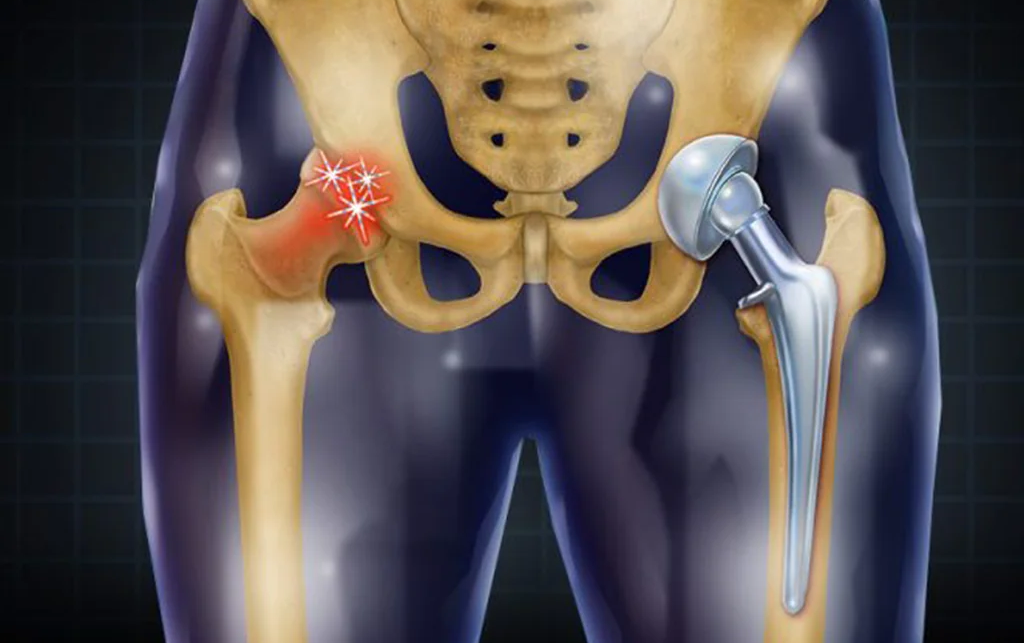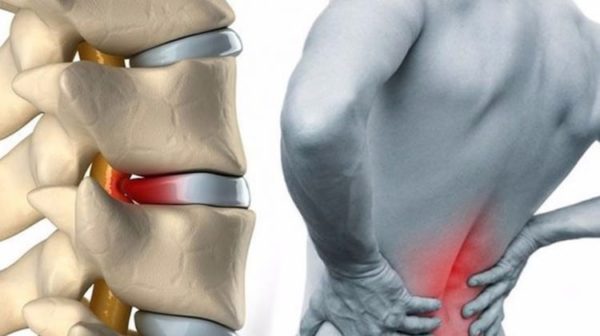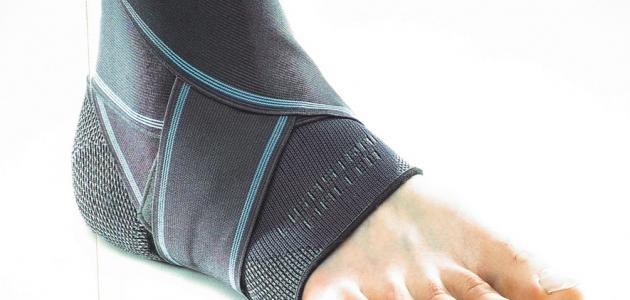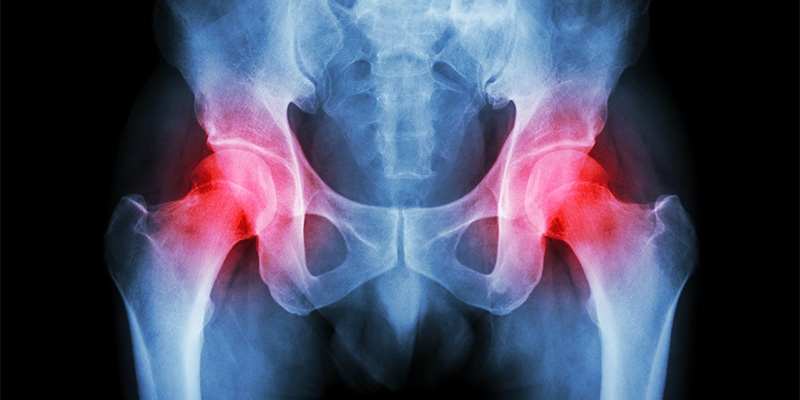Can You Walk on a Broken Leg? Learn the Detailed Answer to This Question with Us!
Can You Walk on a Broken Leg? This question is one of the frequently asked questions by a person who suffers a broken leg, as they become anxious and want to know the condition of their leg in this situation. This is what we will answer in this article, which addresses the most important information regarding the causes of a broken leg, its complications, how to treat it, and the possibility of walking on it.
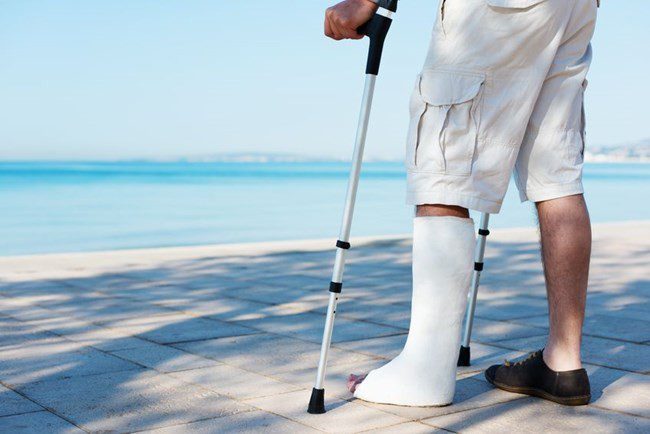
Can You Walk on a Broken Leg?
Injuries affecting bones and joints are common, and many people may suffer a broken leg, which raises the question of whether it is possible to walk on a broken leg. This is an important topic that requires an accurate and reliable answer.
In general, it is usually advised to avoid walking on a broken leg until the bone has healed completely and has been treated properly. In the case of a broken bone, the person experiences pain and discomfort, and walking on the broken leg may worsen the injury and impede the healing process. It is important to assess the condition accurately before deciding to walk on the broken leg.
If there is a break in the foot bone, such as the second metatarsal bone, it is best to avoid walking on the affected side of the foot. Walking on the affected side may exacerbate the fracture and hinder the bone’s preparation for healing. It is advisable to consult the attending physician before taking any steps to ensure that recovery is progressing correctly.
It is worth mentioning that regardless of the type of injury and the broken bone, the patient should refrain from engaging in physically demanding activities or putting excessive pressure on the injured leg. It is preferable to use crutches or assistive devices to reduce the pressure on the leg and improve the healing process. You can get rid of mobility issues and pain with the specialized care of Dr. Amr Amal, and you can walk on the broken leg.
For more information on walking after ankle fracture fixation with plates and screws, click here.
Causes of a Broken Leg
Many people may find it difficult to understand the causes of a broken leg and what can lead to it. In this article, we will provide you with a list of the most common potential causes of a broken leg, including:
- Road accidents: Road accidents are one of the main causes of leg fractures, as the foot may be subjected to a severe impact during the accident.
- Falling from a height: If you suffer from a loss of balance or engage in intense sports activities, you may have the opportunity to fall and eventually break your leg.
- Intense sports: Engaging in intense sports such as soccer or basketball can increase the likelihood of a leg fracture due to the intense collisions and injuries resulting from colliding with other players.
- Aging: The bone becomes more brittle with age, and therefore the likelihood of leg fractures increases due to bone demineralization.
- Chronic diseases: Some chronic diseases such as osteoporosis, diabetes, and rheumatoid arthritis can make bones more brittle and increase the likelihood of fractures.
- Repetitive stress: Some occupational activities such as standing for long periods or wearing inappropriate shoes can lead to repetitive weight-bearing stress on the bones and an increased likelihood of fractures.
- Genetic factors: In some cases, genetic factors may play a role in increasing the likelihood of a leg fracture. If there is a family history of fractures in the lower limbs, this may increase the chances of recurrence.
It is important for the person to remember that prevention is better than cure, so they should follow the necessary preventive measures such as wearing appropriate shoes and avoiding activities that may increase the likelihood of a leg fracture. In case of any leg injury, it is necessary to consult a doctor immediately for proper diagnosis and appropriate treatment. To learn more about osteoporosis, read this article.
Symptoms of a Broken Leg
A broken foot is a common injury that occurs as a result of being exposed to a strong impact or the application of force on the bone. A person may experience a broken foot due to spraining, falling, or direct trauma. Here is a list of the most prominent symptoms that are recognized when a foot fracture occurs:
- Severe and acute pain: Pain is the main problem that a person with a broken foot experiences. The pain is immediate and excruciating after the injury, gradually increasing with activity and gradually subsiding with rest.
- Swelling: Swelling around the fracture site is common. The affected area may visibly swell and become inflamed and painful to the touch.
- Redness and bruising: Redness and bruising may appear around the fracture area due to blood seeping from damaged blood vessels.
- Difficulty moving and walking: The injured person may find it difficult to move or walk normally due to pain and swelling. Putting weight on the affected foot may be intolerable, and the injured person may need to use a crutch to assist with mobility.
- Foot deformity: In the case of a compound fracture, the shape of the foot may become deformed due to the skin tearing and the bones breaking. A part of the bone may protrude through the torn skin.
- Sound of the fracture: In some cases, the sound of the bone breaking may be heard at the time of injury. This sound can cause the injured person to feel shocked and indicate the severity of the fracture.
If there is any suspicion of a foot fracture, it is best to contact medical professionals for an accurate assessment and proper care. Medical treatment may involve monitoring and a comprehensive assessment of the injured foot, and in some cases, surgery may be required, and the fracture may need to be stabilized with a cast or metal hardware.
Complications of a Broken Leg
1. Bone infection (osteomyelitis): A bone infection may occur in the case of a broken leg. This can lead to osteomyelitis, which is a serious complication and requires immediate treatment. Antibiotics should be administered to treat the infection and prevent it from spreading.
2. Delayed healing: In some cases, there may be a delay in the healing process of a leg fracture. This may be due to factors such as malnutrition, other injuries, wound contamination, or lack of physical activity. Accelerating the healing process may require consulting a specialist and following a healthy diet and rehabilitation program.
3. Blood clot formation: The risk of blood clots forming in the leg veins may increase after a leg fracture. If this complication is not properly addressed, the clot can lead to serious health problems such as deep vein thrombosis or pulmonary embolism. Important measures to prevent this issue include moving and performing light exercises after consulting with a doctor.
4. Psychological setbacks: We cannot ignore the psychological complications that may accompany a leg fracture. The injured person may experience feelings of weakness and depression due to the loss of the ability to carry out daily activities normally. It is important that they receive psychological and social support from friends, family, and mental health professionals.
You can avoid potential complications and receive excellent care with Dr. Amr Amal for treating a broken leg.
First Aid for a Broken Leg
In the event of someone suffering a broken leg, first aid should be provided immediately to alleviate pain and reduce harm until medical assistance is summoned. In this article, we will provide you with a quick list of medical guidelines for dealing with a broken leg situation, which include the following:
1. Controlling Bleeding:
- Stop any bleeding using a sterile dressing or a clean piece of cloth.
- Apply pressure to the wound for several minutes until the bleeding is controlled.
- If bleeding continues heavily, call for an ambulance or emergency services immediately.
2. Not moving the affected area:
- It is essential not to move the broken leg, as this may cause further damage and exacerbate the injury.
- Immobilize the affected area by supporting it with the appropriate medical device. A clean piece of cloth can be used to stabilize the leg and prevent its movement.
3. Applying Cold Compresses:
- Use cold compresses to reduce swelling and alleviate pain in the affected area.
- Apply cold compresses to the broken leg for 15-20 minutes, then rest before reapplying.
- Remember that the compresses should not be placed directly on the skin; a piece of cloth should be placed between the compress and the skin to avoid skin burns.
4. Maintaining Mental Clarity and Psychological Comfort:
- Painful injuries can cause psychological shock to the injured person. Therefore, the first aider should help the person remain calm and provide guidance in the appropriate manner.
- Reassure the person and inform them that medical assistance is on the way, and encourage them to take deep breaths and focus on the fact that they will receive proper care.
If the leg fractures are serious or accompanied by other symptoms such as dizziness or feeling unwell, you must contact emergency services or an ambulance immediately. Remember that first aid is a temporary measure until proper medical care is provided, so follow medical instructions carefully and seek the necessary medical assistance.
Treatment for a Broken Leg
- Early Diagnosis:
- Early diagnosis of a broken leg is crucial for effective treatment.
- This includes conducting necessary tests such as X-rays and MRI scans.
- Fracture Stabilization:
- Different methods are used to stabilize fractures, such as casts, screws, and metal plates.
- The tools used are determined based on the severity and location of the fracture, as well as the patient’s condition.
- Surgical Procedure:
- Surgery may be necessary in some severe and complicated cases of leg fractures. You can learn more about pelvic fracture surgery here.
- During surgery, plates, screws, or rods are inserted into the broken bone to assist in its healing.
- Rest and Rehabilitation:
- After treatment, the patient must rest for a sufficient period to allow the fracture to heal properly.
- The patient also needs a rehabilitation program that includes flexibility and strengthening exercises to regain normal strength and mobility in the leg.
- Bone Care:
- In some complex cases, bone care may be an option for treating a leg fracture.
- This care involves partially or completely replacing the broken bone with medical materials such as bone grafts.
- Medical Guidance and Compliance:
- Patients must follow the instructions of the attending physician and attend scheduled follow-up appointments.
- Strict compliance contributes to ensuring a speedy recovery and the complete success of the treatment.

How Long Does It Take for a Broken Leg to Heal?
The healing time for a broken leg varies depending on the type and severity of the fracture. Many measures can be taken to promote the healing process and accelerate bone healing. Generally, healing occurs in stages, with simple fractures typically taking 6 to 8 weeks for complete healing.
In the initial stage, the bones fully heal, and the wound heals after about 6 weeks. Then, there is a stage of fear of developing deep vein thrombosis. The fracture may not be visible on X-rays for 2 to 3 weeks after the injury, and in some cases, CT scans may be required to better assess the injury.
Complex fractures often require a longer healing time, with healing taking 12 to 18 months or more. It is important to note that these are average times and may vary from person to person based on several factors, such as age, overall health condition, and the integrity of the broken bone. Consult your attending physician for an assessment and determination of the appropriate healing time for a leg fracture in each individual case. Rest assured that you can find a comprehensive solution for walking on a broken leg with the expertise of Dr. Amr Amal.
Is a Broken Leg Dangerous?
A broken leg is an injury that occurs when a fracture or crack develops in one of the leg bones. Although this injury is difficult and has a significant impact on the mobility of the affected person, it cannot be considered dangerous in all cases. The degree of danger depends on the type of fracture, its location, and its impact on the leg’s function.
A broken leg should not be underestimated, especially in the elderly. Proper treatment and appropriate care can reduce the negative effects of this injury and help the injured person resume their normal life. Consulting with specialists in this field and adhering to medical advice is crucial for effectively and properly managing this condition.
Can a Broken Leg Be Moved?
There is debate about whether a broken leg can be moved or not. It is true that moving the fractured area can lead to serious complications, especially if the fracture is in the neck or spine. If there is a need to move the affected part of the leg, it should be done with extreme caution under the supervision of a medical professional. However, the inability to move a broken leg does not necessarily mean that there is no fracture.
There may be small, invisible fractures that require special precautions. The patient should follow the doctor’s instructions carefully and avoid moving the fractured part significantly. Ultimately, the patient should consult with the doctor for an accurate diagnosis and proper treatment guidance.
Does a Broken Leg Require Surgery?
Whether a broken leg requires surgery depends on the location and severity of the fracture. In cases of severe foot fractures, surgery may be necessary to stabilize the broken parts by implanting plates or screws into the fractured bone to keep them in the correct position during the healing period.
Patients typically need physical therapy to prevent muscle stiffness and improve joint mobility to the maximum extent possible. Surgery to repair cartilage may also be required in some cases.
The success of surgery to correct the position of a leg fracture depends on several factors, such as the proximity of the fracture to the joint, joint involvement, and joint angulation. The orthopedic surgeon determines whether an ankle fracture requires surgery based on the severity and location of the fracture. It is always advisable to consult a doctor for an assessment of the condition and to take the necessary steps for treatment.
Get the Right Medical Guidance and Effective Treatment to Walk on a Broken Leg with Dr. Amr Amal.

Best Orthopedic Surgeon for Treating a Broken Leg
Egypt is renowned for many experienced specialist doctors, and in the field of orthopedic and joint surgery, Dr. Amr Amal stands out as one of the top experts in this field. Dr. Amr Amal is an expert with a significant reputation and influence in orthopedic surgery in the country.
Having specialized in various bone injuries, Dr. Amr Amal has developed expertise in orthopedic and joint surgery, becoming one of the leading doctors in Egypt and the region. He currently works as a consultant at Borg El Foad Medical Tower, continuing to provide high-quality healthcare to patients.
Dr. Amr Amal is not only an expert in orthopedic and joint surgery but also excels in diagnosing and treating conditions like slipped discs, congenital and hereditary bone and joint problems, and chronic arthritis, in addition to conducting both simple and complex surgical procedures.



